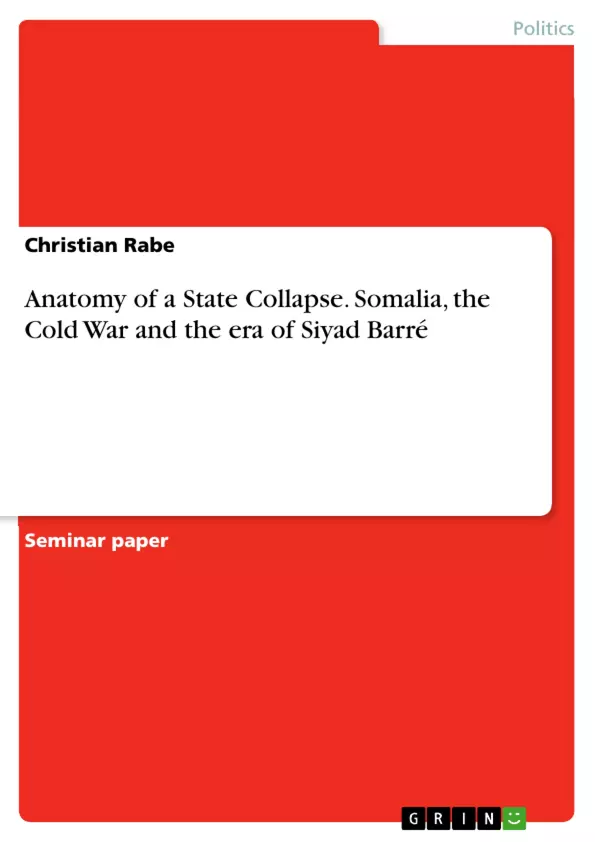“Self-Government now” had been the outspoken declaration of many African leaders in the aftermath of second world war. The broader historical context opened a window for African countries to achieve statehood and new self-determination independent from war ridden European colonial powers. At the Horn of Africa and the neighbouring regions, similarly to the overall trend on the continent, countries became independent. Ethiopia gained first home rule in 1941, Somalia 1960 during the so called year of Africa, Sudan 1956 and Kenya in 1963.
Yet, the new right of self-governance jointly with the difficult colonial heritage brought numerous new problems to African societies. Leaders faced new challenges to transform their territories to progressive and prosperous nation states bringing African countries modernity. However, many of the territories given independence found their way into state failure. As Collier (2007) points out in his book „The bottom billion“ that global poverty is actually falling quite rapidly for about 80% of the world. The real crisis is to be found in a group of about 50 failing states, whose problems challenge traditional approaches to reduce poverty.
He argues that 50 failed states pose the central challenge of the developing world in the twenty-first century. On that account the phenomenon of failed states needs considerable investigation effort by scholars. One especially extreme case of state failure is Somalia. It is this African country, which had become the epitome of a failed state, such frequently quoted, mentioned and discussed in literature like hardly any other. Somalia attained an unknown level of media coverage when the US-led mission UNOSOM in 1992 delivered food and aid to Somalia culminating in the shot down of US Helicopters over Mogadishu by troops of General Mohamed Farrah Aideed, which led to an immediate withdrawal of US troops in October 1993.
Inhaltsverzeichnis (Table of Contents)
- I. INTRODUCTION
- II. CASE SELECTION AND METHOD
- III. CONCEPTS OF STATE FAILURE
- IV. THE ERA OF SIYAD BARRÉ
- V. CONCLUSIONS & INTERPRETATION
- VI. REFERENCES
Zielsetzung und Themenschwerpunkte (Objectives and Key Themes)
This paper examines the state failure of Somalia, focusing on the era of Siyad Barre's government. Its primary objective is to evaluate the explanatory power of existing concepts of state failure by applying congruence analysis. By analyzing the case of Somalia through a two-layered framework, the paper aims to understand how the country's role as a model African nation state failed.
- The historical context of Somali independence and its challenges.
- The role of international relations and domestic politics in Somali state failure.
- The analysis of critical junctures and causal configurations within the Siyad Barre regime.
- The evaluation of various concepts of state failure through congruence analysis.
- The examination of Somalia's state failure in the context of broader global trends.
Zusammenfassung der Kapitel (Chapter Summaries)
The introduction sets the stage for the study by discussing the Somali proverb that encapsulates the fragmentation of society. It highlights the aspirations of African leaders for self-governance in the aftermath of World War II, contrasting the promise of independence with the subsequent challenges of state failure. The chapter introduces Somalia as an extreme case of state failure and emphasizes the need for scholarly investigation into this phenomenon.
Chapter II focuses on the methodology employed in the study. It explains the rationale for selecting Somalia as an extreme case study, highlighting its atypical nature and justifying its use for examining existing concepts of state failure. The chapter introduces the concept of congruence analysis as the methodological framework for the research, emphasizing its potential to discern the validity of existing theories.
Chapter III delves into the concepts of state failure, presenting a distinction between traditional notions and alternative perspectives. The chapter outlines the selection of two concepts from each camp to be juxtaposed with the case of Somalia, aiming to derive conclusions about their validity.
Schlüsselwörter (Keywords)
The key concepts of this paper include: state failure, Somalia, Siyad Barre, congruence analysis, international relations, domestic politics, critical junctures, causal configurations, traditional concepts, alternative perspectives, and the era of African independence.
- Citar trabajo
- Christian Rabe (Autor), 2011, Anatomy of a State Collapse. Somalia, the Cold War and the era of Siyad Barré, Múnich, GRIN Verlag, https://www.grin.com/document/269606



